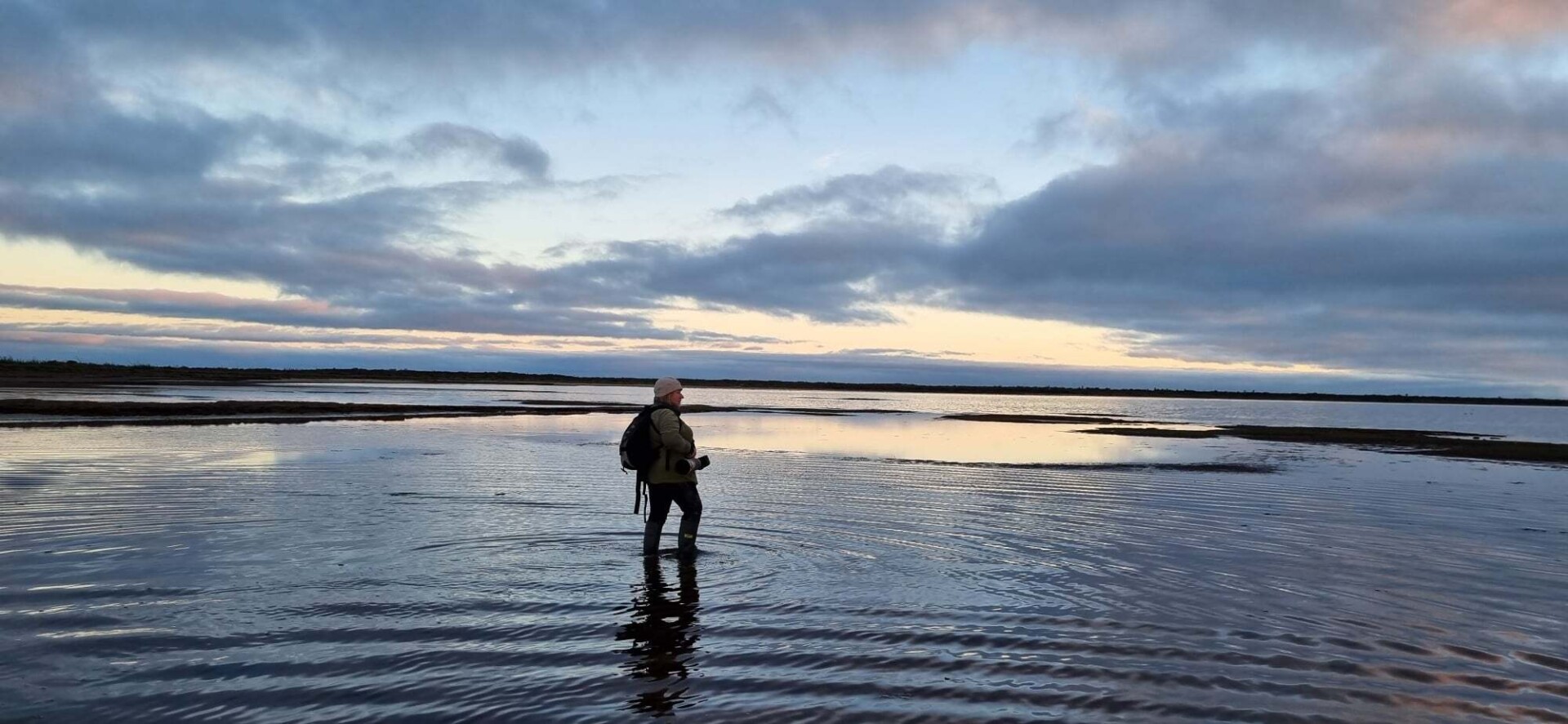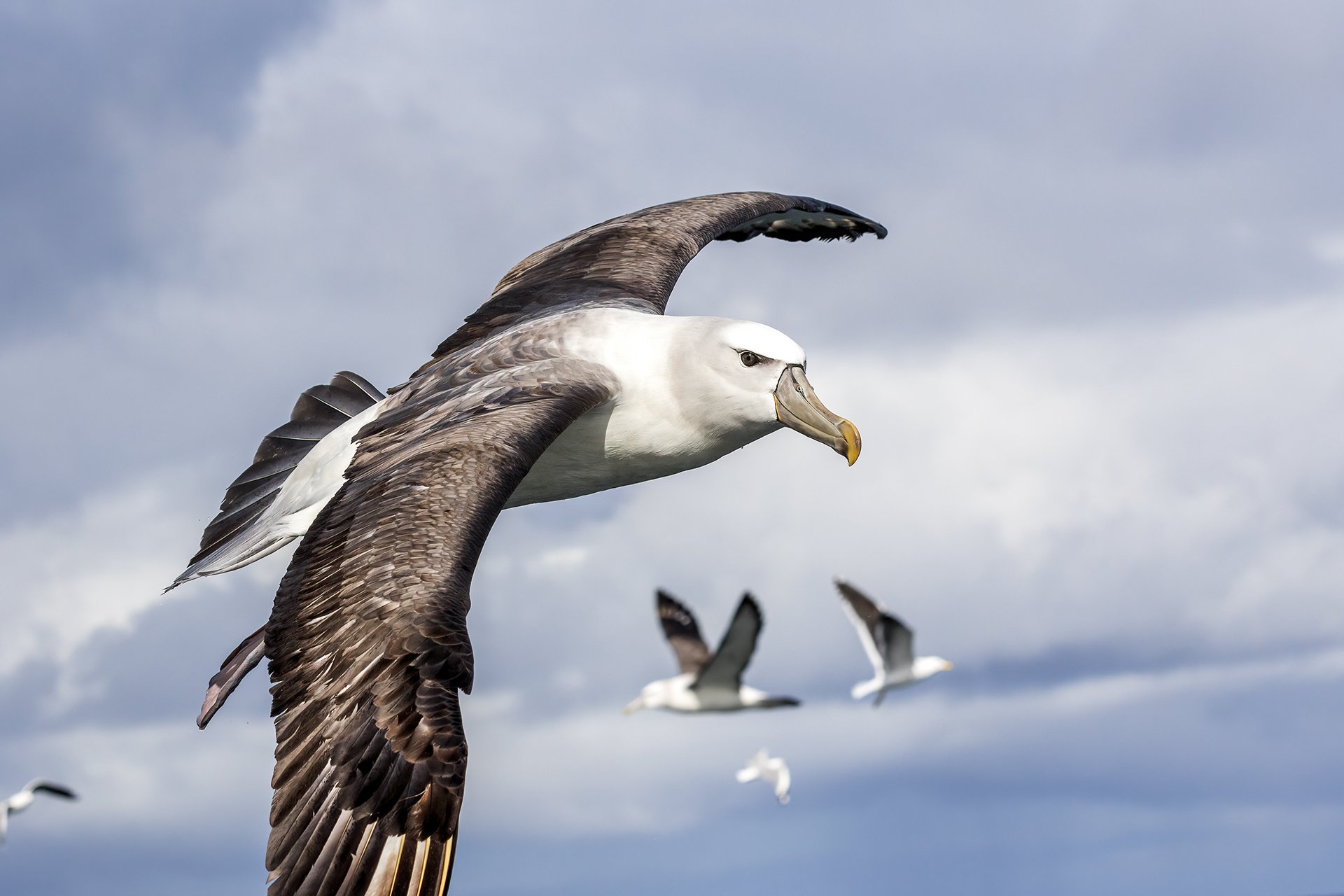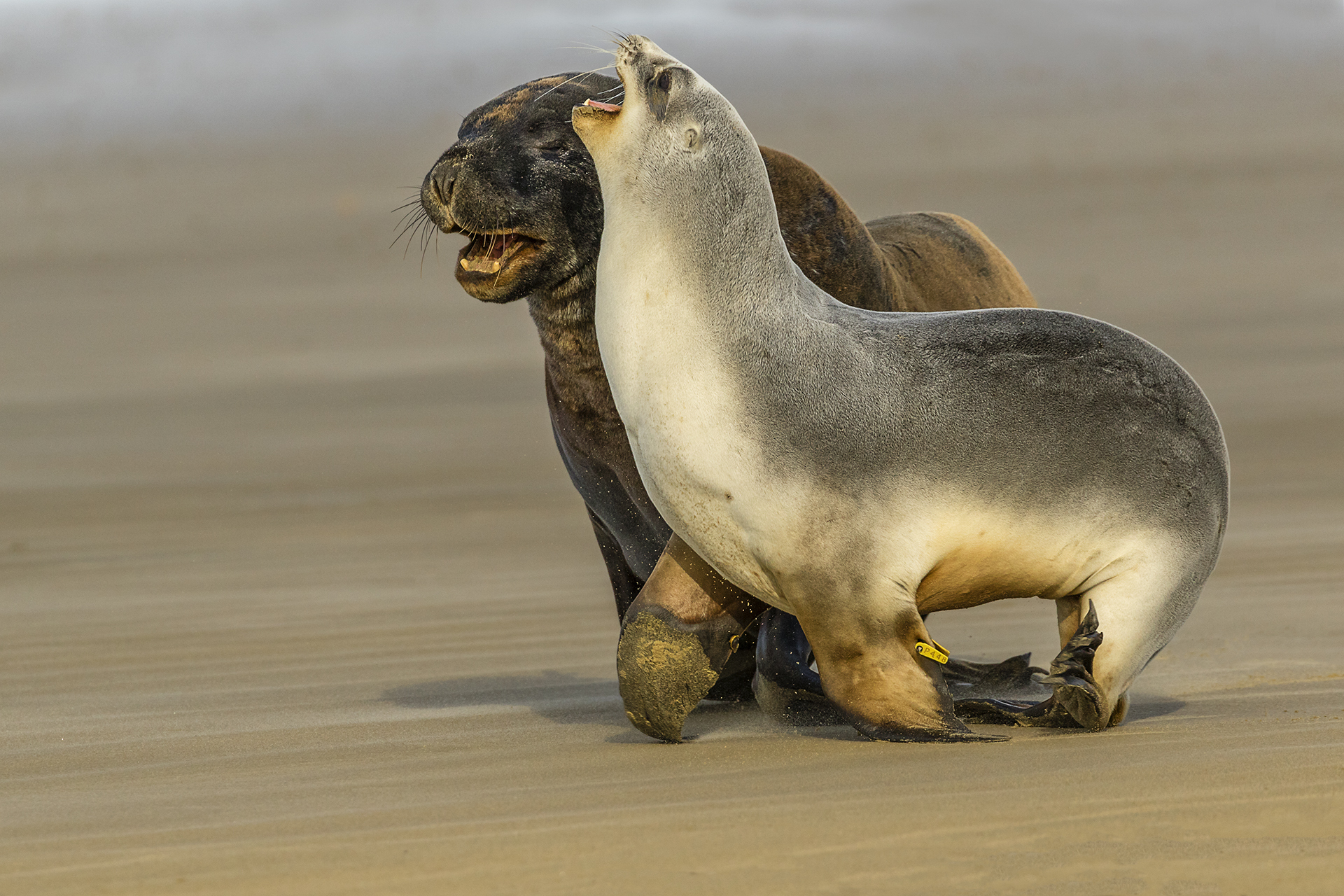On a wind-scrubbed Southland morning, Glenda Rees loads her camera into the car and points herself towards the coast. The road to Awarua Bay is long and narrow, and the tide waits for no one. She drives an hour and a half from her home in Gore, another 20 minutes along the peninsula’s tracks, and then walks the last stretch to the roost. Out there, on the edge of the world, is where the Southern New Zealand dotterel / pukunui gather in winter; and where Glenda has quietly become one of their most devoted sentinels.
The birds are small and plain at first glance, a muted mix of brown and white. Tourists rarely notice them. But to Glenda, each one is an old friend, known by a splash of colour on its leg bands or a quirk in its gait. She still keeps a particular eye out for “Mr. Red”, a bird with a distinctive metal-and-red band combination. He’s been missing since June.
“I very much hope that he’s survived,” she says. “If he’s not surviving, he may have met his demise at Awarua Bay, but generally they do okay there. It’s usually up in the tops, in the breeding grounds, that they face the greatest danger. It’s a bit of an emotional roller coaster now… I can’t separate my feelings for them.”
Glenda’s attachment to the dotterels began almost by accident. She had spent 40 years working as a medical radiation technologist, “twenty-four seven on call, in a completely different zone” — and had little time for hobbies. Then, in 2009, she bought a camera for a trip to Africa, intending to photograph lions. Instead, she found herself chasing small, brilliant birds between rest camps. Back home, a friend suggested she look for the rare southern dotterel.
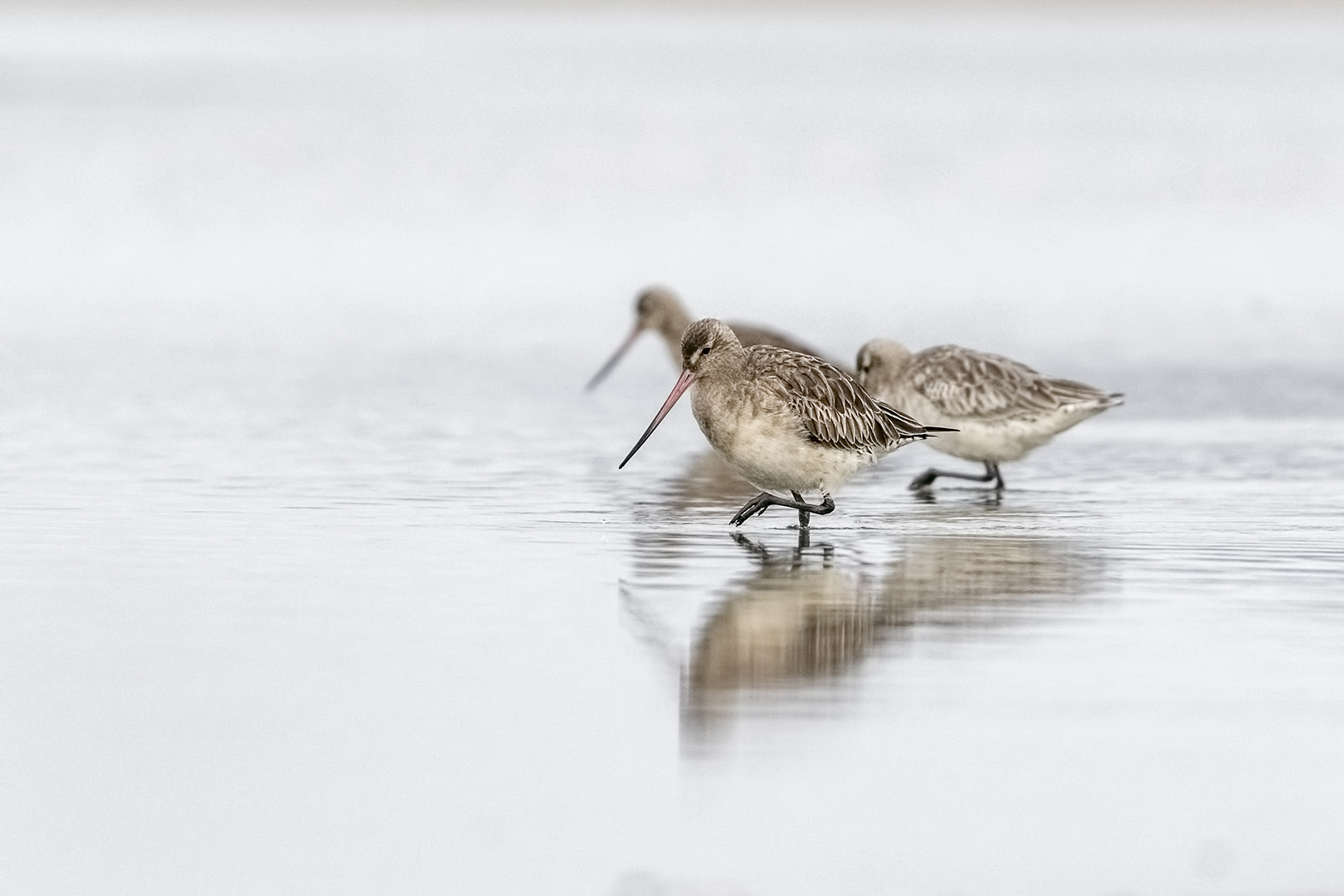
Bar-tailed Godwit
She found them at Awarua, though at first she doubted what she was seeing. “I’d always seen pictures of these dotterels in a bright orange colour,” she recalls. “These were just little bland brown and white looking birds, and I thought, is that them or not?” A quick confirmation from her friend set her on a path that would come to define her retirement.
By 2011 she was visiting them regularly, watching as they slowly transformed into breeding plumage. “By July or August that year, I was just completely smitten,” she says. “They were so stunning and so confiding.”
At first, the attraction was mostly photographic. Glenda’s early bird portraits were good enough to be shortlisted five times for the Wildlife Photographer of the Year awards in the UK, and to earn her a finalist spot in New Zealand Geographic’s Photographer of the Year. In the tight-knit world of bird photography, she quickly became known for her work. But over time, the competition circuit lost its appeal.
“I’ve officially finished entering competitions now,” she says. “My time with the dotterels has become far more of a caretaking role than a photographer’s role. When I go down, the first thing I do is try to locate absolutely every single one I can. I don’t relax until I’ve found them all.”
Her method is simple but meticulous. She notes the band combinations, makes rough record shots, and reports her findings to the Department of Conservation and the Pukunui Recovery Team. It’s unpaid, often solitary work, carried out in all weathers. In the process, she’s become an informal historian of the flock, keeping tabs on individual birds year after year. 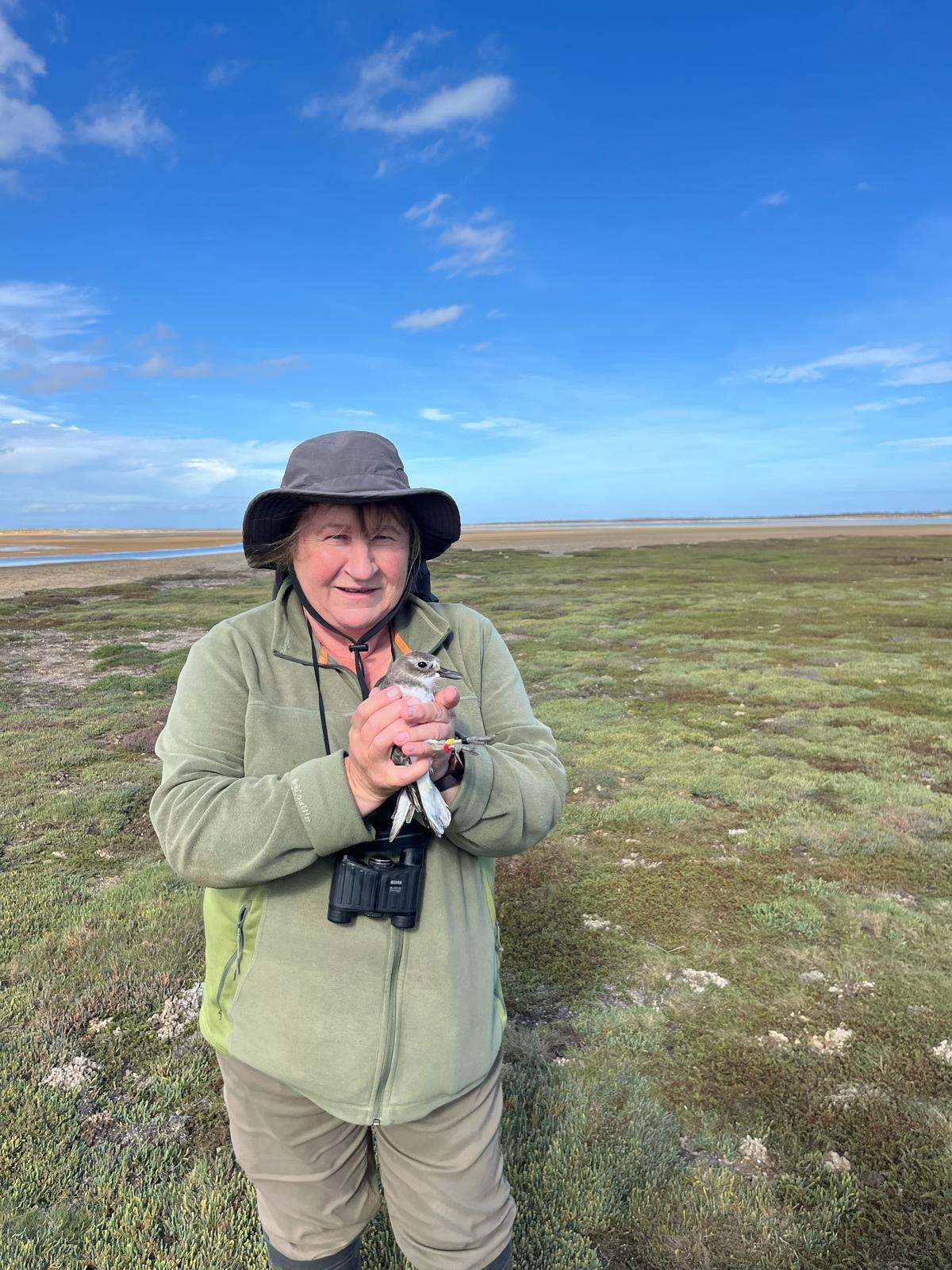
Sometimes she names them. There’s the one with a bent leg. Another she calls Taranaki, a young female she once held during a banding session; something she’d dreamed of for years but hesitated to do. “I’d been offered the opportunity once or twice, but I didn’t know how to hold them properly,” she says. “Finally I got to hold this wee bird, and now I’m always looking out for her.”
If Glenda can’t match the physical contributions of the rangers — hauling traps, climbing into the alpine breeding grounds on Rakiura/Stewart Island — she finds other ways to help. In April, with help from the New Zealand Nature Fund, she joined a helicopter supply drop to see the breeding habitat for herself. “It was great to see why they turn so orange and how well camouflaged they are,” she says. “The environment is so harsh, and you can see why they have adaptations like a longer middle toe. It was a privilege to understand their world a bit better.”
The trip was a rare chance to connect the dots between the two halves of the dotterel’s year; the alpine tops where they breed, and the coastal roosts where they recover. At Awarua, she refers to the birds as “my flock”, though she knows they are only hers in spirit. “They come here for what I call their vacation time,” she says. “They’re not under the same pressures as up on the tops. It’s when they’re just being birds.”
Her work has never been about ownership, but about creating and holding attention for these tiny birds. She is fond of saying that “you can’t protect something you can’t see,” and her photographs have become a bridge between the dotterels and the wider public. She knows that images of a bright-plumaged adult in full breeding colour will travel further than a list of band codes ever could.
This is where Glenda’s approach reflects a wider truth about conservation: it thrives on the contributions of people willing to work within their means. “I’m time-rich, but I’m not physically able to do certain things,” she says. “So I get the balance in where I can. Even if I’m no longer required to do anything for the dotterels, I’ll still visit them for as long as I can — until I’m in a wheelchair and can’t get through the bog.”
In her mind, conservation is as much about community as it is about habitat. It doesn’t matter whether someone’s skill is photography, fundraising, research, or just showing up. “I’d love to be involved in the statistical stuff and the research side,” she says. “There’s so much information we still don’t have about these birds. It would be amazing for someone to mine that and really contribute to their survival.”
For now, she mines her own archives, sifting through years of images to help researchers retrospectively identify birds by sex and age. It’s a slow, home-based job, but it adds to the collective understanding of the species. “I can’t physically do much more than what I do,” she admits. “But photographs and awareness, well, that’s what I can give.”
Her Facebook friends might roll their eyes at yet another dotterel shot, but she persists. The repetition, she knows, is part of the point. To care about a species, people need to encounter it again and again until the sight of it feels familiar. And in a small way, that’s how a flock of anonymous shorebirds becomes “my flock” to more than just one woman.
Fifteen years in, Glenda has learned that conservation isn’t the domain of scientists alone. It belongs to anyone who notices and acts. She encourages others to start where they are, with what they have. “Imagine if there was a Glenda for every project,” she says with a laugh, before adding, “I hope they’d be much younger and fitter than I am.”
Her own journey began with a camera bought for a holiday and led to the quiet heart of a conservation effort. She has won international recognition, held a bird she once only saw through a lens, and stood in the mountain habitat that shapes their lives. But the truest measure of her work is in the small acts repeated week after week: driving to the coast, scanning the tide line, counting every bird until the list feels complete.
Somewhere out there, Mr. Red may still be alive. Taranaki might be feeding among the flock. And Glenda will be there, watching, for as long as the tide, the mud, and her own determination will let her.
